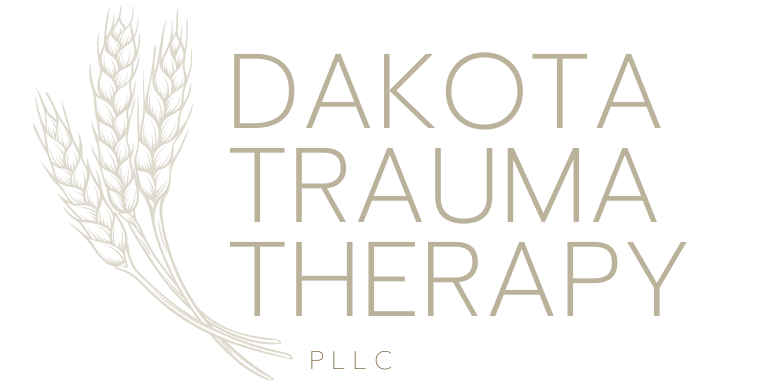We are creatures of habit, that’s from a popular adage. Routines and patterns are what our bodies require. One of the most important ways that our bodies recuperate from stress and trauma is through sleep.
A good night’s sleep can help us feel better. People who have suffered from trauma or PTSD frequently have trouble sleeping. (1) Many times, sleep causes severe nightmares, prompting people to either refuse to fall asleep or to start waking up soaked in perspiration and panicked. High functioning anxiety, hypervigilance, physical difficulties as a result of the trauma, or self-medicating with drugs and alcohol are all factors that might disrupt sleep. (2)
Sleep is the process through which the body analyzes the events of the day and organizes them into a coherent narrative. Our body’s natural healing mechanism is REM (Rapid Eye Movement) sleep. (3)
The use of EMDR (Eye Movement Desensitization and Reprocessing) to treat trauma and chronic stress has the added benefit of improving sleep habits for trauma victims. Traumatic life experiences and persistent stresses that interfere with good sleep patterns are treated with EMDR. EMDR can be used to address trauma from the past as well as more current traumatic events such as automobile accidents, divorce, death of a loved one, crime victimization, military or first responder experiences, and so on. (4)
Some traumatic incidents occur at night, which can have a significant impact on a person’s capacity to feel at ease at night. EMDR can be used to target and treat traumatic experiences that occurred at night or while sleeping, whether they were caused by humans or natural disasters. (5)
If sleeplessness is caused by a traumatic incident or experience in a person’s life, EMDR can be used to treat it. EMDR therapy is an effective non-medicated method of sleep treatment.
Sleep
Sleeping is a physiological process. It accounts for around one-third of a person’s lifespan. It appears to be necessary for survival since chronic sleep deprivation causes severe physical damage, cognitive decline, and even mortality.
Sleep disruptions are significant clinically because they are indications of nearly all mental disorders.
Sleep is a condition in which one’s awareness of external stimuli is minimized. Sleep is distinguished from coma, hibernation, and death by its ability to be quickly reversed.
Phases of Sleep
A normal night’s sleep has five phases that recur in a cyclical pattern. Non-REM (non-rapid eye movement) sleep is stage 1-4, whereas REM (rapid eye movement) is stage 5.
The shift from consciousness to deep sleep is made during non-REM sleep. We consolidate our day’s memories during this period, committing some to long-term memory. During this stage, dreams are simple and centered on the events of the day.
EEG records brain activity and electrical impulses in both waking and sleeping states. In terms of physical features, REM and NREM sleep are also distinct. (6)
The EEG shows a reduction in activity during NREM sleep. This is also known as orthodox sleep when the brain looks to be in a relaxed state. (7)
In the case of REM sleep, the eyes wander back and forth, giving the stage its name. We have vivid dreams during this period, and we lose all muscle tone and our body temperature lowers. (8)
An EEG obtained during REM sleep is very similar to one recorded while awake, with substantial activity across the brain, especially in the hippocampus. REM sleep is considered to be important in the processing and consolidation of emotional memories from a psychological standpoint. (9)
A recent study shows that REM sleep may also help with emotional regulation. So much so that numerous studies link an atypical REM sleep pattern to mood disorders, such as melancholic depression with more REM sleep, anxiety with less REM sleep, and PTSD with recollections during REM sleep. (10)
Stages of Sleep
The phases of sleep are divided into four categories. Each stage is almost separate and corresponds to a sleep cycle. As the person sleeps, these cycles tend to repeat themselves more than once. (11)
The first stage of sleep is the NREM phase. The alpha action is eliminated here. The EEG pattern shifts to a low voltage mixed frequency pattern with significant theta activity (3-7 cps) and sharp waves scattered throughout. Muscle tone drops and eye movements slow down.
During the first stage, the individual is conscious of their surroundings and may be readily awakened. Sudden muscular spasms and a feeling of falling may occur, as well as nightmares.
Before moving on to stage 2, stage 1 lasts a few minutes. Sleep spindles (12-14 cps) and K-complexes can be seen on the EEG in this case. These K complexes are negative sharp waves with a large amplitude followed by positive sluggish waves. This is also an NREM stage, and it represents the person’s perception of the start of sleep.
Stages 3 and 4 come after Stage 2. The EEG displays slow waves (in humans, greater than 2 cps). Slow-wave sleep, delta sleep, and deep sleep are terms used to describe stages 3 and 4. At this point, arousal is tough to achieve. As a person develops from stage 2 to 4, their eye movements start to decrease. The EMG reveals that muscle tone is deteriorating at this point.
REM sleep occurs after stages 1 to 4 of NREM sleep. The EEG looks to be comparable to stage 1 NREM sleep during REM sleep. Theta waves (3-7 cps) and a decrease in muscular tone are seen. There may be muscular spasms as well as fast eye movement in bursts.
Normal Duration of Sleep
While sleeping patterns vary slightly from person to person, most healthy individuals require seven to nine hours of sleep every night in order to function well. (12) Some people can perform efficiently on fewer than 6 hours of sleep every night, while others require approximately 12 hours. Even more, is required for children and teenagers. Despite the popular belief that our sleep requirements reduce as we get older, most elderly individuals still require at least seven hours of sleep.

Insomnia
Insomnia is characterized by a lack of contentment with either the quantity or quality of sleep. Patients have difficulty getting asleep or staying asleep for long periods. Insomniacs typically only receive a few hours of sleep every night, either sleeping late or getting up early or both. In addition, even if the sleep is of normal duration, it may be of poor quality – insomniacs frequently complain about nonrestorative sleep. As a result, day-to-day activities are always impacted. Patients complain of exhaustion, mood disturbances, and difficulty paying attention. (13)
From a medical perspective, a few types of insomnia can be diagnosed as the following. Acute or short-term insomnia in which the symptoms last less than three months, persistent insomnia in which symptoms last for three months or longer and recurrent insomnia in which two or more episodes of insomnia over one year. (14)
About one-third of individuals experience chronic insomnia symptoms, however, only 6-10% fulfill the criteria for insomnia disorder. Acute insomnia, on the other hand, is thought to afflict up to 50% of the population.
It has long-term repercussions that go beyond the concerns of the patients. Several medical problems, including hypertension, diabetes, heart disease, arthritis, and chronic pain, have been linked to a lack of sufficient restful sleep.
It can be a standalone ailment, although it frequently arises alongside other mental illnesses such as anxiety, major depressive disorder, acute stress disorder, or post-traumatic stress disorder. It is not unusual for it to occur alongside medical problems such as chronic pain, neurological diseases, or sleep disturbances caused by breathing issues.
Ways to Cope with Insomnia
For insomnia, cognitive-behavioral treatments are considered first-line therapy. They outperform medicine in terms of efficacy and durability of effects, and patients prefer them. CBT-I has been found to improve sleep regulation by enhancing both REM and non-REM phases of sleep. (15)

The first step in dealing with insomnia is to implement a set of sleep hygiene guidelines. Creating a regular sleep pattern, avoiding stimulants like coffee and cigarettes, and having a dark and quiet bedroom are just a few examples.
In addition to psychological methods, pharmacological approaches have an unquestionable role in the treatment of insomnia. The major class of relevance here is benzodiazepines, which have been used as insomnia therapy for the past 30 years. They work by increasing the major inhibitory neurotransmitter GABA (-aminobutyric acid action )’s on the brain. (16)
While their effectiveness is undeniable, they are only suggested for short-term use, especially in the case of extreme insomnia. Long-term usage is linked to a higher risk of tolerance and addiction, as well as, albeit contentiously, a higher overall death rate.
Insomnia may also benefit from relaxation exercises. Methods for reducing muscle tension and cognitive alertness are included in relaxation training. Progressive muscle relaxation, guided visualization, and breathing methods are examples of traditional treatments. Mindfulness meditation has recently developed as a supplementary therapeutic intervention aiming at relaxing the mind by concentrating on awareness and attention to the present moment. It has been shown to aid in the reduction of dysfunctional sleep beliefs and to work well with various treatments, including medicine. (17)

What is EMDR?
EMDR (Eye Movement Desensitization and Reprocessing) is a unique type of psychotherapy developed by Francine Shapiro in 1987. It was created to assist patients in dealing with stressful situations. (18) Patients would recollect short moments of the traumatic experience while doing a distracting task during sessions.
Adaptive resolution is used in EMDR to transform trauma from a potentially unpleasant and provocative event to one that is no longer associated with unpleasant, charged emotional, physical, behavioral, or cognitive repercussions. Relearning, which includes replacing the trauma’s destructive and painful input with new, more adaptable knowledge and connections, is the foundation of adaptive resolution. (19)
One of the most fascinating aspects of EMDR treatment is bilateral stimulation. Bilateral stimulation enhances information processing, allowing new, more adaptable associations with the trauma to emerge. The patient will be instructed to move their fingers from side to side by the therapist. Other methods, such as hand tappers or audio stimulation, may be used as well.
When a person recalls a painful incident while concentrating on bilateral stimulation, the trauma begins to fade. The vision of the trauma that the affected individual carries will eventually disappear, as will accompanying worry and gloomy sadness. (20)
For EMDR treatment to be as successful as possible, it must take place in a secure atmosphere, under the supervision of a competent therapist, and with the use of relaxation methods. EMDR can aid in complete information processing, new learning, emotional discomfort reduction, and the development of new ideas when utilized appropriately.
How does EMDR Help with Insomnia?
If insomnia is not caused by a physical problem and has roots in a traumatic incident or experience in a person’s life, EMDR can help. EMDR (Eye Movement Desensitization and Reprocessing) therapy is a non-pharmaceutical method to sleep treatment. Psychological insomnia or learned insomnia can result from poor sleep hygiene established as a result of childhood maltreatment and can be treated with EMDR therapy.
Insomnia may be a terrible experience in and of itself. EMDR treatment can be used to treat insomnia fears. Following the processing of prior trauma experiences with EMDR, present trauma events are treated. Finally, the EMDR procedure creates a future template in which the client imagines falling asleep smoothly and without effort.
EMDR For Underlying Afflictions
Insomnia is frequently a symptom of a more serious underlying condition. Insomnia symptoms can be linked to PTSD, anxiety, and depression. In these cases, treating the root of the problem is the best line of action.
In the treatment of PTSD, EMDR therapy is at least as successful as other types of psychotherapy, with faster outcomes and better patient tolerance. EMDR is a good suggestion in the treatment of PTSD since it improves both clinical symptoms and quality of life. In clinical trials, EMDR has shown promising benefits for depression, anxiety, and obsessive-compulsive disorders, severe pain, and potentially even psychotic illnesses. (21)
All of these disorders may be linked to insomnia, which can be relieved by addressing the underlying disease.
EMDR therapy has been demonstrated in several controlled studies on small sales to be not only effective in the short term but also to have long-term effects. One study looked at people months after they had received either standard care (SC) or EMDR treatment for PTSD. They discovered that EMDR was much more successful in reducing PTSD symptoms both during and after therapy. During the three- and six-month follow-ups, they also observed that people sustained these benefits after the therapy ended. EMDR treatment was found to offer patients a longer-lasting reduction in symptoms than SC treatment. (22)
EMDR and REM Sleep
The feature of an EMDR session and REM sleep are similar in that both entail remembering emotionally rich experiences while attending to external stimuli, most often eye movements. This highlights the concern of whether EMDR can help with persistent REM sleep loss or provide some of the advantages of REM sleep.
This notion is supported by several neuroimaging data. EMDR sessions appear to alter and consolidate memory processing in the same manner that REM sleep does. Emotional processing tended to be increased as well, resembling emotional memory processing during REM sleep.
There are also physiological similarities between EMDR and REM sleep, including improved activity in the amygdala, medial prefrontal cortex, and hippocampus in both. Emotional processing and control, as well as learning and memory, are all aided by these areas.
The EEG data recorded during EMDR sessions is similar to slow-wave sleep, suggesting that memory integration and a sensation of calm and safety are being induced. (23)
EMDR for Sleep
The long-term consequences of EMDR are still being disputed, as most research on the topic is based on tiny clinical trials. Nonetheless, numerous studies have found that a complete EMDR therapy course, which includes all required sessions, might result in long-term benefits for insomnia after three, six, or even 35 months of follow-up. This puts it on par with other CBT-I treatments.
In certain research, EMDR has been identified as a therapeutic technique for the treatment of nightmares due to PTSD. (24)
Despite promising preliminary findings, more large-scale, randomized controlled trials are needed to accurately assess EMDR’s efficacy as a standalone and in combination with other treatments for insomnia.

Final Thoughts
Insomnia has a severe negative influence on one’s quality of life and must be addressed. Aside from the everyday drowsiness and exhaustion, depriving the brain and the entire body of a restful night’s sleep might have serious consequences.
When there is an obvious cause for insomnia, such as a traumatic incident, anxiety, or some underlying psychological illness, treating the illness is the best option for long-term results.
With its established outcomes in trauma management, EMDR may be useful here.
Moreover, because of the therapy’s striking similarity to REM sleep, its advantages may extend beyond this conventional purpose and help with other types of sleep disturbances.

